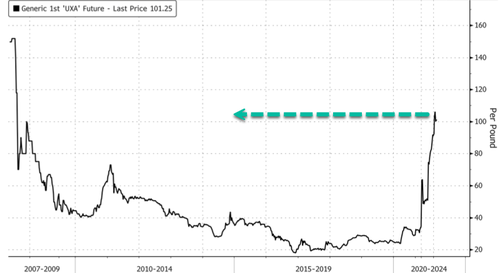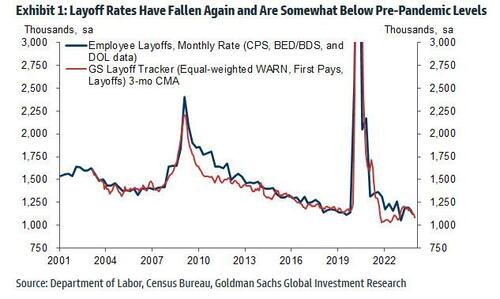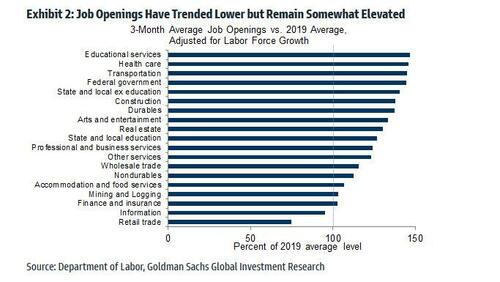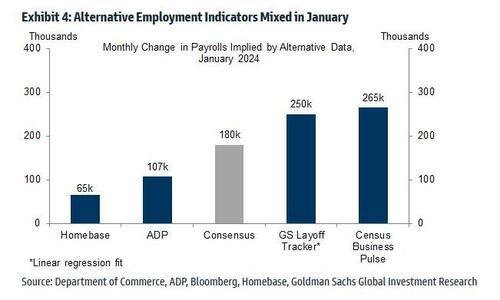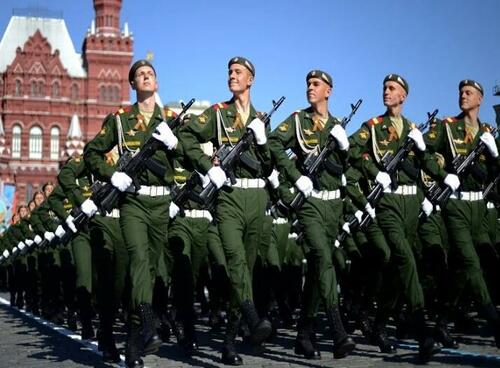Authored by John & Nisha Whitehead via The Rutherford Institute,
“We’re all potential victims.”
– Peter Christ, retired police officer
Sometimes ten seconds is all the warning you get.
Sometimes you don’t get a warning before all hell breaks loose.
Imagine it, if you will: It’s the middle of the night. Your neighborhood is in darkness. Your household is asleep. Suddenly, you’re awakened by a loud noise.
Barely ten seconds later, someone or an army of someones has crashed through your front door.
The intruders are in your home.
Your heart begins racing. Your stomach is tied in knots. The adrenaline is pumping through you.
You’re not just afraid. You’re terrified.
Desperate to protect yourself and your loved ones from whatever threat has invaded your home, you scramble to lay hold of something—anything—that you might use in self-defense. It might be a flashlight, a baseball bat, or that licensed and registered gun you thought you’d never need.
You brace for the confrontation.
Shadowy figures appear at the doorway, screaming orders, threatening violence, launching flash bang grenades.
Chaos reigns.
You stand frozen, your hands gripping whatever means of self-defense you could find.
Just that simple act—of standing frozen in fear and self-defense—is enough to spell your doom.
The assailants open fire, sending a hail of bullets in your direction.
In your final moments, you get a good look at your assassins: it’s the police.

Brace yourself, because this hair-raising, heart-pounding, jarring account of a SWAT team raid is what passes for court-sanctioned policing in America today, and it could happen to any one of us or our loved ones.
Nationwide, SWAT teams routinely invade homes, break down doors, kill family pets (they always shoot the dogs first), damage furnishings, terrorize families, and wound or kill those unlucky enough to be present during a raid.
No longer reserved exclusively for deadly situations, SWAT teams are now increasingly being deployed for relatively routine police matters such as serving a search warrant, with some SWAT teams being sent out as much as five times a day.
SWAT teams have been employed to address an astonishingly trivial array of so-called criminal activity or mere community nuisances: angry dogs, domestic disputes, improper paperwork filed by an orchid farmer, and misdemeanor marijuana possession, to give a brief sampling.
Police have also raided homes on the basis of mistaking the presence or scent of legal substances for drugs. Incredibly, these substances have included tomatoes, sunflowers, fish, elderberry bushes, kenaf plants, hibiscus, and ragweed. In some instances, SWAT teams are even employed, in full armament, to perform routine patrols.
These raids, which might be more aptly referred to as “knock-and-shoot” policing, have become a thinly veiled, court-sanctioned means of giving heavily armed police the green light to crash through doors in the middle of the night.
No-knock raids, a subset of the violent, terror-inducing raids carried out by police SWAT teams on unsuspecting households, differ in one significant respect: they are carried out without police even having to announce themselves.
Warning or not, to the unsuspecting homeowner woken from sleep by the sounds of a violent entry, there is no way of distinguishing between a home invasion by criminals as opposed to a police mob. In many instances, there is little real difference.
According to an in-depth investigative report by The Washington Post, “police carry out tens of thousands of no-knock raids every year nationwide.”
While the Fourth Amendment requires that police obtain a warrant based on probable cause before they can enter one’s home, search and seize one’s property, or violate one’s privacy, SWAT teams are granted “no-knock” warrants at high rates such that the warrants themselves are rendered practically meaningless.
In addition to the terror brought on by these raids, general incompetence, collateral damage (fatalities, property damage, etc.) and botched raids are also characteristic of these SWAT team raids.
In some cases, officers misread the address on the warrant. In others, they simply barge into the wrong house or even the wrong building. In another subset of cases, SWAT teams have conducted multiple, sequential raids on wrong addresses; executed search warrants despite the fact that the suspect is already in police custody; or conducted a search of a building where the suspect no longer resides.
That appeared to be the case in Ohio, when a botched SWAT team raid in pursuit of stolen guns at a home where the suspects no longer resided resulted in a 17-month-old baby with a heart defect and a breathing disorder ending up in the ICU with burns around the eyes, chest and neck. In that Jan. 10, 2024, incident, police waited all of six seconds after knocking on the door before using a battering ram to break in and simultaneously launch two flash-bang grenades into the home. The baby’s mother, having lived in the house for a week, barely had time to approach the door before she was grabbed at gunpoint, handcuffed and hustled outside. Only later did police allow her to enter the home to check on the baby, who had been hooked up to a ventilator near the window that police shattered before deploying the flash grenades.
Aiyana Jones is dead because of a SWAT raid gone awry. The 7-year-old was killed after a Detroit SWAT team—searching for a suspect—launched a flash-bang grenade into her family’s apartment, broke through the door and opened fire, hitting the little girl who was asleep on the living room couch. The cops weren’t even in the right apartment.
Exhibiting a similar lack of basic concern for public safety, a Georgia SWAT team launched a flash-bang grenade into the house in which Baby Bou Bou, his three sisters and his parents were staying. The grenade landed in the 2-year-old’s crib, burning a hole in his chest and leaving him with scarring that a lifetime of surgeries will not be able to easily undo.
The horror stories have become legion in which homeowners are injured or killed simply because they mistook a SWAT team raid by police for a home invasion by criminals.
That’s exactly what happened to a 16-year-old Alabama boy. Mistaking a pre-dawn SWAT team raid for a home invasion, the boy grabbed a gun to protect his family only to be gunned down by police attempting to execute a search warrant for drugs. The boy’s brother, not home at the time of the raid, was later arrested with 8 grams of marijuana.
Then there was Jose Guerena, the young ex-Marine who was killed after a SWAT team kicked open the door of his Arizona home during a drug raid and opened fire. According to news reports, Guerena, 26 years old and the father of two young children, grabbed a gun in response to the forced invasion but never fired. In fact, the safety was still on his gun when he was killed. Police officers were not as restrained. The young Iraqi war veteran was allegedly fired upon 71 times. Guerena had no prior criminal record, and the police found nothing illegal in his home.
All too often, botched SWAT team raids have resulted in one tragedy after another for those targeted with little consequences for law enforcement.
The problem, as one reporter rightly concluded, is “not that life has gotten that much more dangerous, it’s that authorities have chosen to respond to even innocent situations as if they were in a warzone.”
A study by a political scientist at Princeton University concludes that militarizing police and SWAT teams “provide no detectable benefits in terms of officer safety or violent crime reduction.” The study, the first systematic analysis on the use and consequences of militarized force, reveals that “police militarization neither reduces rates of violent crime nor changes the number of officers assaulted or killed.”
SWAT teams, designed to defuse dangerous situations such as those involving hostages, were never meant to be used for routine police work targeting nonviolent suspects, yet they have become intrinsic parts of federal and local law enforcement operations.
There are few communities without a SWAT team today.
In 1980, there were roughly 3,000 SWAT team-style raids in the US.
Incredibly, that number has since grown to more than 80,000 SWAT team raids per year, often for routine law enforcement tasks.
In the state of Maryland alone, 92 percent of 8200 SWAT missions were used to execute search or arrest warrants.
Police in both Baltimore and Dallas have used SWAT teams to bust up poker games.
A Connecticut SWAT team swarmed a bar suspected of serving alcohol to underage individuals.
In Arizona, a SWAT team was used to break up an alleged cockfighting ring.
An Atlanta SWAT team raided a music studio, allegedly out of a concern that it might have been involved in illegal music piracy.
And then there are the SWAT team raids arising from red flag gun laws, which gives police the authority to preemptively raid homes of people “suspected” of being threats who might be in possession of a gun, legal or otherwise.
With more states adding red flag gun laws to their books, what happened to Duncan Lemp—who was gunned down in his bedroom during an early morning, no-knock SWAT team raid on his family’s home—could very well happen to more people.
At 4:30 a.m. on March 12, 2020, in the midst of a COVID-19 pandemic that had most of the country under a partial lockdown and sheltering at home, a masked SWAT team—deployed to execute a “high risk” search warrant for unauthorized firearms—stormed the suburban house where 21-year-old Duncan lived with his parents and 19-year-old brother. The entire household, including Lemp and his girlfriend, was reportedly asleep when the SWAT team directed flash bang grenades and gunfire through Lemp’s bedroom window. Lemp was killed and his girlfriend injured.
No one in the house that morning, including Lemp, had a criminal record.
No one in the house that morning, including Lemp, was considered an “imminent threat” to law enforcement or the public, at least not according to the search warrant.
So, what was so urgent that militarized police felt compelled to employ battlefield tactics in the pre-dawn hours of a day when most people are asleep in bed, not to mention stuck at home as part of a nationwide lockdown?
According to police, they were tipped off that Lemp was in possession of “firearms.”
Thus, rather than approaching the house by the front door at a reasonable hour in order to investigate this complaint—which is what the Fourth Amendment requires—police instead strapped on their guns, loaded up their flash bang grenades and acted like battle-crazed warriors.
This is what happens when you use SWAT teams to carry out routine search warrants.
These incidents underscore a dangerous mindset in which the citizenry (often unarmed and defenseless) not only have less rights than militarized police, but also one in which the safety of the citizenry is treated as a lower priority than the safety of their police counterparts (who are armed to the hilt with an array of lethal and nonlethal weapons).
Yet it wasn’t always this way.
There was a time in America when a person’s home was a sanctuary, safe and secure from the threat of invasion by government agents, who were held at bay by the dictates of the Fourth Amendment, which protects American citizens from unreasonable searches and seizures.
The Fourth Amendment, in turn, was added to the U.S. Constitution by colonists still smarting from the abuses they had been forced to endure while under British rule, among these home invasions by the military under the guise of “writs of assistance.” These writs gave British soldiers blanket authority to raid homes, damage property and wreak havoc for any reason whatsoever, without any expectation of probable cause.
We have come full circle to a time before the American Revolution when government agents—with the blessing of the courts—could force their way into a citizen’s home, with seemingly little concern for lives lost and property damaged in the process.
If these aggressive, excessive police tactics have also become troublingly commonplace, it is in large part due to judges who largely rubberstamp the warrant requests based only on the word of police; police who have been known to lie or fabricate the facts in order to justify their claims of “reasonable suspicion” (as opposed to the higher standard of probable cause, which is required by the Constitution before any government official can search an individual or his property); and software that allows judges to remotely approve requests using computers, cellphones or tablets.
This sorry state of affairs is made even worse by the U.S. Supreme Court, which tends to shield police under the guise of qualified immunity. As Reuters concluded, “the Supreme Court has built qualified immunity into an often insurmountable police defense.”
Rubber-stamped, court-issued warrants for no-knock SWAT team raids have become the modern-day equivalent of colonial-era writs of assistance.
Given President Biden’s determination to expand law enforcement and so-called crime prevention at taxpayer expense, our privacy, property and security may be in even greater danger from government intrusion.
Be warned: as I make clear in my book Battlefield America: The War on the American People and in its fictional counterpart The Erik Blair Diaries, the American police state has become a powder keg waiting for a lit match.


